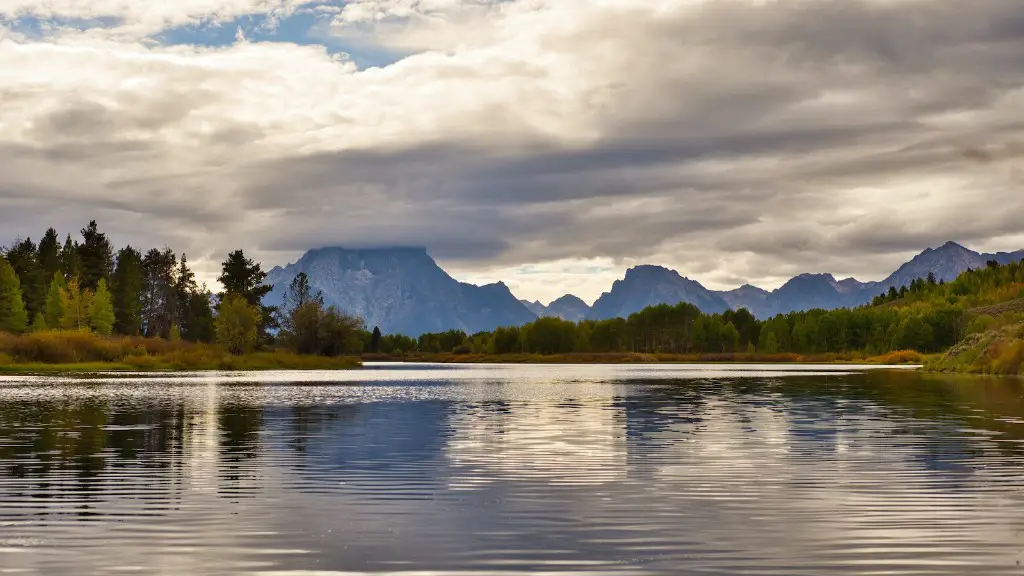The Nile is one of the world’s longest and most important rivers, with a breadth spanning two continents and supplying over 90% of the fresh water consumed in Egypt and Sudan. It has been an essential source of livelihood for many communities since ancient times, and its history and geography are closely intertwined with the Egyptian and Sudanese people’s history and culture.
The source of the Nile River has long been debated by scholars. While the traditional position held by the Greeks and Romans was that the river originated in the Mountains of the Moon, a range situated in the heart of Africa, modern-day research has presented evidence that the river actually communicates with Lake Victoria in Uganda. Its headwaters are the Blue Nile, which flows out of Lake Tana in Ethiopia, and the White Nile, which originates at Lake Victoria.
An examination of the geography of the Nile demonstrates why the river is such an important lifeline for the people of Egypt and Sudan. First, the Nile is part of the longest river system in the world and is approximately 4,145 miles long. This mammoth distance enables the movement of industry, goods and people, which in turn promotes economic development. The river also helps to regulate the region’s climate, providing a buffer from the harsh climates experienced in some of the region’s deserts.
The Nile is also a major source of irrigation for agricultural purposes, helping communities to cultivate a wide variety of crops. Many of which would not be possible without this invaluable resource. Across all of these areas, it can be seen how the river impacts all aspects of life in the region and is vital for the economic and social development of the region.
Moreover, the Nile provides a vital source of hydropower and is used extensively to generate electricity. This is especially true in Sudan, where the Merowe Dam provides around a quarter of Sudan’s electricity. In addition, the Nile has been developed extensively to boost the region’s irrigation infrastructure, enabling the efficient and effective distribution of water to communities.
Effects of Human Activity on the Nile:
The human activities taking place along the banks of the Nile River have led to a number of potential negative impacts. In particular, over-fishing, deforestation and landmines have all caused damage to the river’s ecosystem. Such activities have also caused a large amount of pollution to enter into the river’s water, consequently impacting water quality and animal and plant life.
Furthermore, the population increases in the area combined with an increase in agriculture has meant that more and more water is being taken from the river for the purposes of irrigation. This has led to the river’s flow slowing down and, in some cases, stagnating. This in turn has led to water shortages in certain communities as people no longer have access to as much water as they once did.
Protection of the Nile:
In recognition of the importance of the Nile River and the damage that could occur if left unmanaged, the Nile Basin Initiative was established in the year 1999. This regional intergovernmental cooperative agreement aims to implement shared ideas, promote cooperative actions and pursue the protection of the Nile.
This cooperation has led to the construction of numerous projects across the river in an attempt to mitigate the impact of climate change and protect the river from any potential damage from human activities. One example of this is the Aswan High Dam, which is an engineering marvel that has notably raised the level of the Nile and helped to prevent flooding. This has opened up the possibility for much-needed sustainable development in the region.
Environmental Concerns:
Despite the ongoing activities to protect the Nile, there are still a number of environmental concerns concerning the river. In particular, there is an increasing amount of pollution entering the river each year due to human activities, including the dumping of industrial waste and oil spills. In addition, there is evidence of overfishing of certain species, a problem that is placed largely on the commercial use of the river and its resources.
Moreover, the Nile’s health is further placed at risk due to the presence of the invasive aquatic weeds, water hyacinth, which is known to choke certain areas of the river. In order to alleviate this threat, various control programs have been implemented in recent years, aimed at eliminating the spread of the weed.
Nile Regional Cooperation:
Increasing cooperation between the countries sharing the Nile is essential for the long-term protection of the river. By working together, the countries could develop shared policies and regulations aimed at protecting and preserving the river’s health. This would also enable the managed use of the resource and its resources, promoting sustainability and taking a preventative approach to environmental degradation.
In addition, cooperation between the countries could help to reduce the conflict over water resources in the region. This could be accomplished through the adoption of a shared dispute resolution mechanism and collaboration between the countries to increase mutual understanding of their respective needs and interests. Cooperation would also enable the countries to access resources and expertise in order to better manage their water needs and promote further development opportunities.
Conclusion of Nile Regional Cooperation:
To bring about lasting stability and sustainability in the Nile Basin, regional cooperation is vital. Through cooperation, countries can access resources and expertise in order to better manage their water needs, developing shared policies and regulations aimed at preserving the health of the Nile. In addition, the countries can reduce conflict over water resources and access the resources needed to promote further development opportunities. It is only through such cooperation that a lasting and sustainable future for the Nile River can be achieved.



